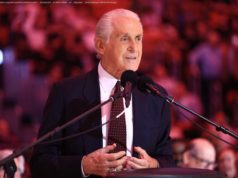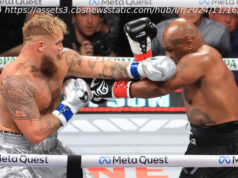The Babe used to barnstorm across America. Willie Mays played stickball in the street. None of it «counted,» but like tonight’s Derby, it didn’t have to.
One summer day a few years ago, a bunch of 16-year-olds were playing ball in Southern California. Nobody was keeping score, nothing mattered for any standings. It was just a bunch of kids with bats and gloves, sun beating down, school still weeks away. It sounds glorious, doesn’t it?
But the scene actually touched the sadness parts of my brain. These kids were playing not for fun but because there were dozens of scouts and major league execs watching them at a showcase event. Those scouts weren’t all that interested in this game — they were there to see the 17-year-olds — but the teenagers were still trying to stand out. The pitchers were trying to light up radar guns, the batters were selling out for power, the fielders were overthrowing cut-off men to show off their arms, every baserunner was trying to steal. Nobody was keeping score, but this all counted, and it counted mostly to the extent that it would affect some major league team’s chances of winning a World Series someday. The stands were full, and nobody cheered. Editor’s Picks Olney: Sluggers prep for the Home Run Derby
Freddie Freeman hasn’t homered in BP in three years, but like all eight hitters competing on Monday, he’s going in with a plan to adjust and win. 2018 Home Run Derby: Bracket and other top things to know
From Washington’s homegrown superstar to a pair of Cubs teammates, here’s what you need to know about the field that will be swinging for the fences at Nationals Park. Your complete guide to All-Star Week
From the drama of the Home Run Derby to the Midsummer Classic storylines to follow, here’s what you need to know as baseball’s best hit D. C.
2 Related
Freddie Freeman hasn’t homered in BP in three years, but like all eight hitters competing on Monday, he’s going in with a plan to adjust and win.
From Washington’s homegrown superstar to a pair of Cubs teammates, here’s what you need to know about the field that will be swinging for the fences at Nationals Park.
From the drama of the Home Run Derby to the Midsummer Classic storylines to follow, here’s what you need to know as baseball’s best hit D. C.
There’s absolutely nothing wrong with any of this, and there is a lot of joy in seeing a teenager with a dream. But it struck me that these players had already been drawn into the gravitational pull of Major League Baseball’s championship season. In the year 2018, most baseball has been: the minor leagues, once upon a time their own independent competitive pursuits, now exist almost entirely to take care of the big league teams’ resources. The best college and high school players are seen to matter mostly as future draft picks. American fans see foreign leagues mostly as talent to pull over here. To a lot of us, all of the world’s high-level baseball counts only to the degree that it matters for 30 teams’ chances of winning the World Series someday.
Last year’s best baseball moment, in my opinion, was the Home Run Derby. That’s an event that doesn’t count, except on its own terms — it certainly doesn’t help anybody win a World Series. But Aaron Judge and Giancarlo Stanton cracking opposite-field dingers 480 feet while Cody Bellinger cackles at the absurdity of it all will stay with me forever, perhaps more than any other part of the 2017 season. It was suspenseful in its own way, it was a memorable display of athleticism, it was the finest moment of one of our era’s finest players, and it didn’t need to count toward the World Series to be any of that.
It joins a long record of fantastic baseball that didn’t count. There used to be a lot of really fun bonus baseball going on. This is just an observation — not a call to action — but it’s worth asking whether the future will still include any bonus baseball. What would it look like? Well, historically speaking, it looked like this:
They still talk about the time Babe Ruth came to town.
Which town? Almost any town. There’s a plaque in Dunsmuir, California, a tiny city in the state’s far north, where reports at the time said Babe «drove a ball to the top of a fir tree, a distance of 604 feet and 5 inches (measured by a surveyor).» In Rutland, Vermont, the Rutland Historical Society devoted one volume of its quarterly to Ruth’s visit in 1919, when Ruth hit a ball that «soared so far into right field that the Rutland outfielder lost sight of it.» In the small Southern California city of Brea, the Heritage Center displays souvenirs from when Ruth supposedly hit a 550-footer off Walter Johnson. In Wilkes-Barre, Pennsylvania, the university claims with absolute, bold-print confidence that Ruth hit «the longest home run in the history of the sport.»
Babe Ruth hit 714 home runs that counted — and 15 postseason homers that really counted — but to a fan in the 1920s, Ruth’s career went far beyond that because he spent most winters barnstorming towns such as these.
«If you were a pretty good baseball player in the twenties, professional or amateur, big-city or small-town, the chances were pretty good that you played against Babe Ruth at least once in your life,» biographer Leigh Montville wrote in The Big Bam . «He had played between 200 and 250 games every year, 154 of them in big-league parks, but the rest in the Dyckman Ovals of America .
«His best records weren’t recorded in books; they were kept in individual memories of an astounding sight witnessed on a warm afternoon, the memories transferred by word of mouth. There were no rules in many of these games he played. Sometimes he would bat every inning in these small towns. Sometimes he simply would stay at the plate, swinging until he hit one out.
«In how many towns and cities had he hit the longest ball anyone ever had seen? The news reports back to New York from the barnstorming road would be a paragraph, maybe two, and most of the time they would mention his one or two homers and half of the time would mention the longest home run ever seen in Rutland or Binghamton or Minneapolis.»
His 1924 barnstorming tour drew more fans per game than the average major league contest that year — at least, if his publicist at the time is to be believed.
Now, you’ve undoubtedly seen a picture of Willie Mays playing stickball, just like maybe you’ve seen a video of Bryce Harper joining a slow-pitch softball game. But you might have assumed, as I did, that this was a one-off thing, a photo op or a spur-of-the-moment impulse. In fact, Mays played stickball all the danged time, even when he was the NL’s MVP.
«He would play stickball in the afternoon before night games, or he’d play in the evening when the Giants had a day game,» James Hirsch wrote in Willie Mays: The Life, The Legend . «New York sewers are reportedly placed about 30 yards apart. A two-sewer hitter was pretty good, but Mays was a mind-blowing five-sewer slugger. Could he really hit a rubber ball 450 feet? Who knows, but a report that he could hit the ball six sewers was a definite exaggeration. Monte Irvin thought Mays was going to damage his swing… As a rookie, he once lost track of time, and with a real game about to start [Manager Leo] Durocher sent Forbes to look for him. He found Willie on a manhole cover.»
A Colliers headline from the time: «Willie’s best hits aren’t for the Giants.» Even late in his career, as a Met, Mays sometimes stopped at a park to play stickball on his way to Shea Stadium, Hirsch reported.
In an empty stadium in 2002, a Japanese television show convinced Bernie Williams, Jason Giambi and Bonds to bat against a bunch of absurdist obstacles: Pitches thrown through smoke screens, pitches thrown by a lefty and righty winding up simultaneously and, finally, pitches thrown from a guy on a trampoline.
The whole thing is outlandish — Bonds, in dungarees, telling Giambi to hurry up so they can go get some chicken wings, while a laugh track shrieks in the background — but it’s also a wonderful glimpse at Bonds. Williams and Giambi can’t hit a single pitch fair. Bonds, after mimicking Ichiro’s batting stance, cranks a home run and starts to raise his arms as though he just hit No. 756.
«I’ve seen everything,» he says. «I thought I’ve seen everything. But I haven’t seen everything.»
Or when he challenged softball star Jennie Finch to pitch to him.
It’s everything you love and hate about Bonds: He’d take on any challenge, but only if he could be grumpy about it. He’d praise another’s greatness, but only, you sensed, so that it would reflect more brightly on him. He dares her to «throw the cheese» but refuses to take full swings, then taunts her («Oh, I’m sorry») when he successfully taps her pitches.






